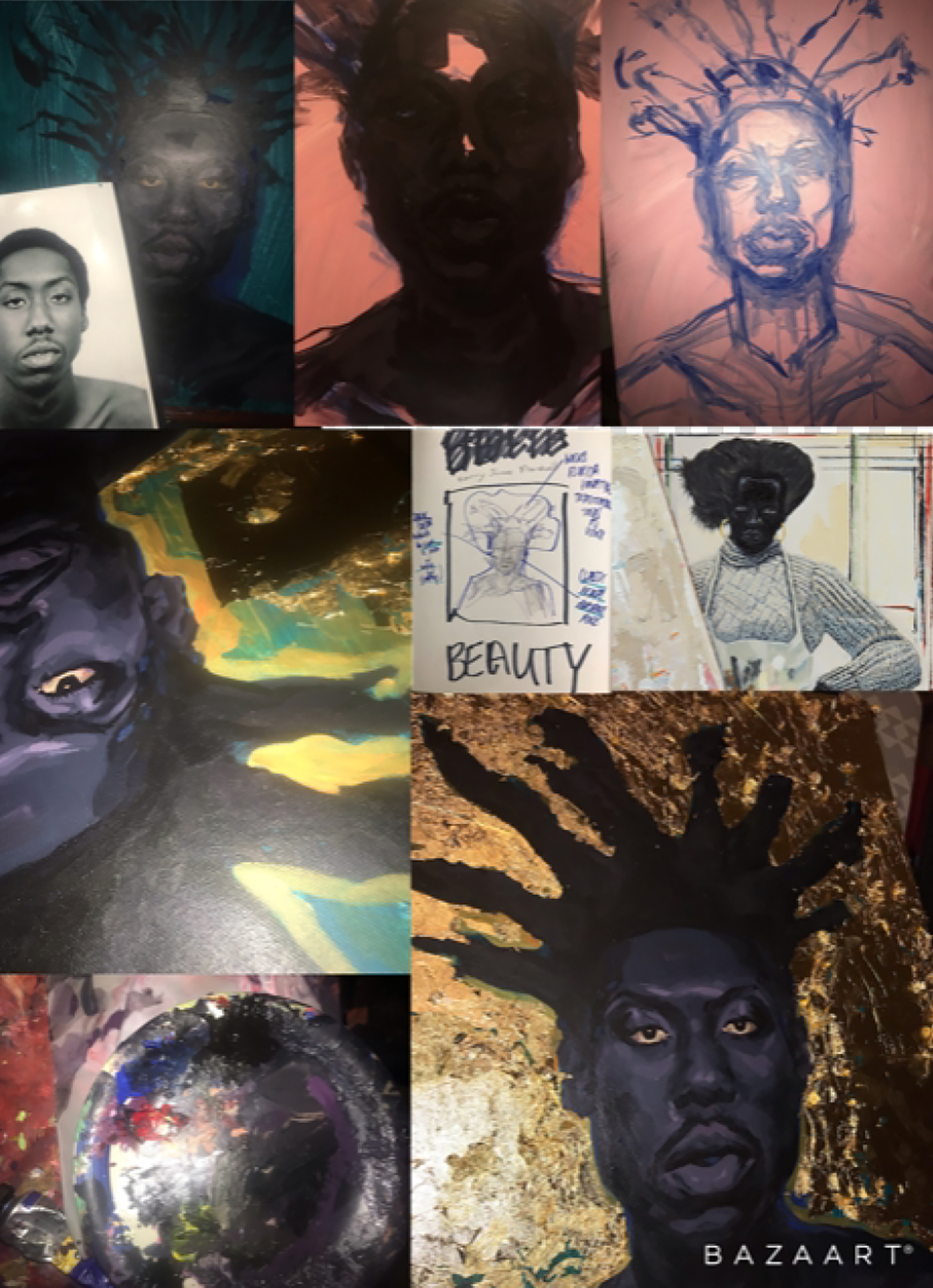AP Art of the Week
Spotlight on Artist Larry Fullwood, Jr.
Welcome to The Elective’s digital art museum, dedicated to the incredible work of AP Arts students. This week we feature a mixed-media work made by Larry Fullwood, Jr. from Douglass Anderson School of the Arts in Jacksonville, FL.
Welcome to The Elective’s digital art museum, dedicated to the incredible work of AP Arts students. Each week we highlight a work or series created in one of the AP Arts concentrations—AP 2-D Art and Design, 3-D Art and Design, and AP Drawing (the AP Program also offers Art History and Music Theory)—as well as a statement from the artist (and, occasionally, their teacher).
From the first cave paintings to contemporary breakthroughs in virtually reality, art, in all its forms, has been a crucial way for people to process, make sense of, comment on, and grapple with the world around them. In 2020, there is a lot to process and grapple with—and AP Art students have risen to the challenge. The work many of them submitted in their final portfolios is explicitly of the moment, from commentary on the covid-19 pandemic to the celebration of people of color to the nature of heroism in perilous times.
The work is often challenging and provocative but always insightful, inspiring, and expansive.
This week we feature a mixed-media work made by Larry Fullwood, Jr. from Douglass Anderson School of the Arts in Jacksonville, FL.

Here’s Larry’s statement on the work:
"How can I portray the reality and unconventional cultural beauty of Black people in the South, as it relates to my personal experiences?
Inspiration for my investigation was obtained from the hairstyles, fashion, movies, and overall culture of Black people in my neighborhood and in the South. Color schemes in my pieces are reminiscent of album covers from hip-hop, R&B, and soul artists that I listen to while painting. Initially I just painted Black women. In an effort to diversify my subject matter, I included more paintings of men. I posterized my images because I was unsure about my brush strokes and how to execute certain values. With each piece I practiced and improved painting techniques.

During the process of this investigation, I researched painters like John Singer Sargent. I used traditional beautiful portrait formatting for this piece to show wicks, deemed ugly in our community. Two references were used, one was my model and the other someone with the hairstyle I was portraying. After painting the figure, gold leaf was added to the background, leaving areas of blue.
I attempted to emulate loose and expressive brush strokes. After exclusively using canvas, I switched to Masonite board and increased the amount of paint used to achieve my desired brush strokes. I took inspiration from and built aesthetics based on the many parts of my culture that I love. I took care to ensure my pieces reflected the beauty of my culture that is often appropriated and ridiculed."
Here are a few more pieces from Larry’s portfolio:

The idea of this piece was to reveal a glimpse of my everyday life, while using color to reflect the warmth of the South. The picture was captured on my front porch, the figure was painted, then the background.

"Slime" is a term used in hip-hop meaning family and is associated with the color lime green. The piece portrays the family-like bonds essential to me and like-minded Black males.

Compositionally, the piece was inspired by album covers of Southern hip-hop groups, like Hot Boyz.

My goal was to reveal the welcoming nature of Black women, contrary to their harsh media portrayal. The image was posterized to interpret brushstrokes and edited to make shadows blue and highlights pink.

The piece represents the growth and conflict switching from an old to a new barber. Blue represented loyalty and trust. Green showed growth. Yellow is associated with conflict.

A combination of different old family photos of my mother were used as reference.
Student statements are lightly edited for clarity.
